Clean Energy Transition and Risk Management Toolkit

Risk Management Resources to Support Your Clean Energy Transition
In the last five years, ESG (Environmental, Social, Governance) criteria have evolved from a simple sign of corporate responsibility to a requirement to satisfy expanding demands from the government, investors and the public. Organizations must begin investing responsibly into their ESG planning and resources to meet upcoming regulations while subsequently managing the risks that accompany this long-term transition.
The list of ESG risks is vast and includes climate change impacts, environmental management practices, cyber threats, understanding upcoming regulations and more. Our combined insights provide expert risk management guidance as you navigate towards critical net-zero goals.
Toolkit Resources:
Exclusive Access to ABS Group Webinars
- ISO 55000 Asset Management: The New Business Revolution
- Analyzing the Ultimate Cybersecurity Threat: Converging IT/OT Environments
- Hurricane Preparedness: Weathering the Storm
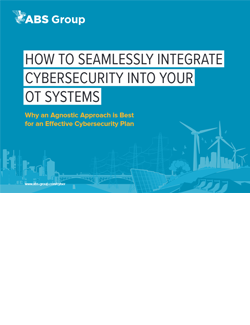
How to Seamlessly Integrate Cybersecurity Into Your OT Systems
Industrial cybersecurity in the power space has a vital baseline function—to protect critical infrastructure against cyber threats and attacks. Explore the top cyber misconceptions that lead to security breaches.
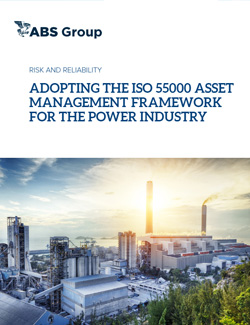
White Paper: Adopting the ISO 55000 Asset Management Framework for the Power Industry
Today, power utilities face many challenges, including interconnected digital technologies, regulatory requirements and climate change. One of the benefits of ISO 55000 certification is the ability to show regulators, stakeholders and customers the ability to manage risk efficiently.
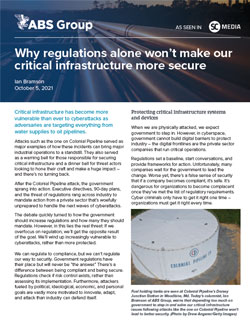
Media Article: Why Regulations Alone Won’t Make Our Critical Infrastructure Secure
When critical infrastructure is physically attacked, we expect the government to step in. However, in cyberspace, the government cannot build digital barriers to protect you. Learn why organizations should demand that prospective partners and suppliers demonstrate good cyber hygiene practices as part of their due diligence and operational risk management.
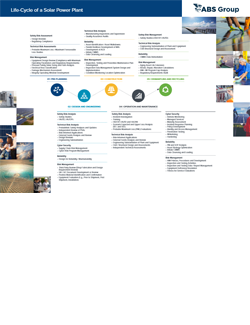
Life-Cycle of a Solar Power Plant
The rise of solar energy is a product of the ambitious renewable energy targets set by global authorities to combat climate change. Asset owners must understand the impact that natural hazards such as earthquakes, hurricanes and floods can have on plant operations.
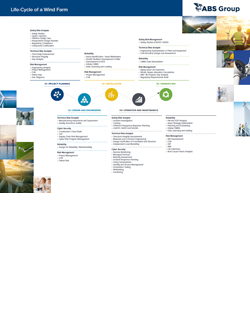
Life-Cycle of a Wind Farm
Wind power is being used on a large scale worldwide. However, there are negative environmental consequences associated with a wind power plant's lifetime. To better understand these potential effects, it is crucial to know the components of day-to-day work and the general stages in the life of a utility-scale energy project.

Cybersecurity Services for the Wind Power Industry
As wind power rapidly increases its global footprint and share of energy production, it is also becoming a key target for cyber attacks. The dispersed and remote nature of wind power makes it uniquely vulnerable and attractive to cyber hackers worldwide. Learn how you can maximize protection and minimize risk.
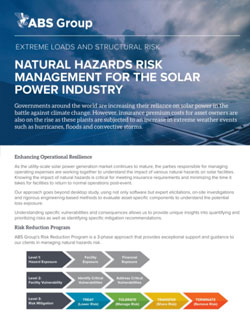
Natural Hazards Risk Management for the Solar Power Industry
Governments around the world are increasing their reliance on solar power in the battle against climate change. However, insurance premium costs for asset owners are also on the rise as these plants are subjected to an increase in extreme weather events such as hurricanes, floods and convective storms.
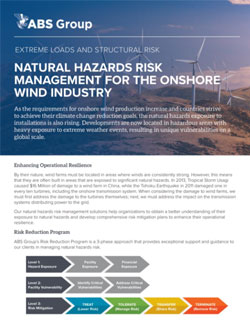
Natural Hazards Risk Management for the Onshore Wind Industry
As the requirements for onshore wind production increase and countries strive to achieve their climate change reduction goals, the natural hazards exposure to installations is also rising. Developments are now located in hazardous areas with heavy exposure to extreme weather events, resulting in unique vulnerabilities on a global scale.
Additional Resources
The success of your organization’s ESG decision-making and performance will be greatly impacted by the amount of time and resources you invest internally. Download our full toolkit for critical guidance as you begin (or continue) your sustainability journey.